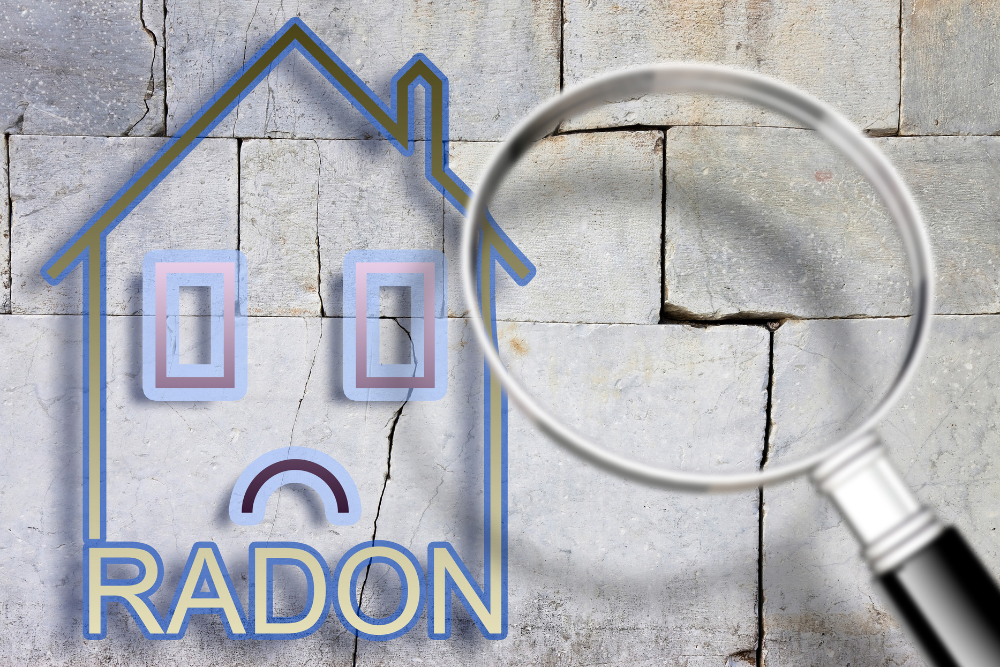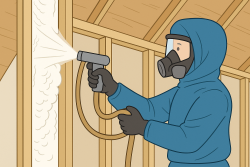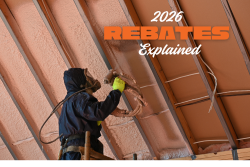Professional Insight on Ensuring Safety and Compliance
Understanding and mitigating the risks associated with radon gas is paramount in Waterloo's residential and commercial construction landscape. Given the health implications tied to prolonged radon exposure—principally lung cancer in non-smokers—the role of contractors and builders extends beyond mere construction; it involves ensuring the long-term safety and wellness of occupants. This discussion explores practical strategies for incorporating radon mitigation systems in new constructions and retrofitting existing buildings in Waterloo, emphasizing the efficacy of Spray foam insulation in Waterloo.
Understanding Radon's Peril
Like many areas across Canada, Waterloo is not immune to radon gas's perils. This radioactive, odourless, and colourless gas from soil and rock can infiltrate homes and buildings through foundation cracks, joints, and gaps around pipes. Its presence is particularly alarming given its status among non-smokers as the leading cause of lung cancer, surpassing fatalities from car accidents, house fires, and carbon monoxide incidents combined.
Despite the health risks, the awareness and testing for radon in Waterloo remain surprisingly low, underscoring a critical area for action among homeowners, contractors, and builders alike.
Radon Mitigation: Active and Passive Measures
Addressing radon exposure necessitates a twofold approach: passive and active mitigation systems. Both methods rely on creating a depressurization zone beneath the building's foundation, facilitating the extraction of radon gas and preventing its entry into living spaces. While passive systems leverage natural convection to move radon out of the building, they may be insufficient for homes with higher radon levels, necessitating the upgrade to an active system with a mechanical fan.
Crucially, implementing these systems must be considered during the construction phase, with contractors and builders in Waterloo adhering to building code requirements for radon mitigation. This proactive stance safeguards occupants' health and aligns with increasing governmental incentives for radon risk reduction.
Innovative Solutions with Closed-Cell Spray Foam Insulation
One of the most effective barriers against radon entry is the application of closed-cell spray foam insulation (ccSPF). Its unique properties—expansion into crevices and adherence to building elements—create a continuous barrier against radon, effectively sealing potential entry points. This method stands out not only for its radon mitigation capabilities but also for its additional benefits in thermal insulation and moisture control.
The advent of hydrofluoroolefin (HFO)- -based ccSPF products has marked a significant advancement in this field. These products, tested for radon diffusion, have shown remarkable efficacy in reducing radon levels, offering a robust solution for new construction and retrofitting projects in Waterloo.
Spray foam insulation emerges as a critical element in radon mitigation strategies and contributes to buildings' overall energy efficiency and structural integrity. Its application under slabs, on foundation walls, and roofs addresses radon risks and enhances the building's thermal performance and moisture resistance.
Professional Implementation and Compliance
For contractors and builders in Waterloo, selecting and implementing ccSPF for radon mitigation requires a nuanced understanding of the product's properties and the regulatory landscape. It's imperative to choose ccSPF products that have undergone rigorous testing for radon diffusion and comply with Canadian Construction Materials Centre (CCMC) standards. This ensures the health and safety of occupants and aligns with national building codes and standards.
Moreover, staying informed about governmental incentives and grants for radon mitigation can provide additional leverage for homeowners and builders alike to address this critical issue effectively.
Conclusion: A Call to Action for Waterloo's Construction Community
In conclusion, the responsibility of mitigating radon risk in Waterloo rests heavily on the shoulders of the construction community. Through informed choices, such as the strategic application of Spray foam insulation and adherence to best practices in new constructions and retrofits, contractors and builders can play a pivotal role in safeguarding public health.
Embracing these strategies demonstrates a commitment to excellence in construction and reflects a deeper understanding of buildings' role in the health and wellness of their occupants. As we move forward, let's ensure that our efforts in Waterloo set a benchmark for radon mitigation, building safety, and occupant health.


















